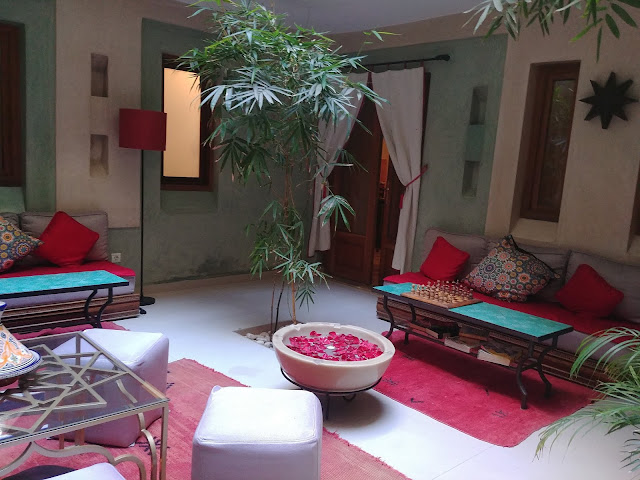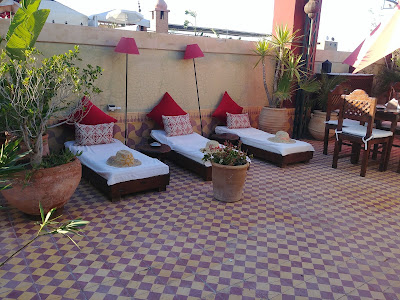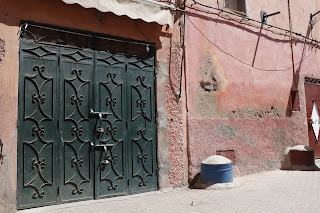Land of Temples and Tombs...
 |
| Valley of the Kings from hot air balloon ride. |
Ancient Egyptian civilizations focussed on the afterlife.
The afterlife was more important than the current life and everything revolved
around preparing for the afterlife. It
was not
really reincarnation but more resurrection, believing that you would return
just like the sun sets at night and comes back up the next morning.

That is why the most important God was Ra, or AmunRa – the God
of the Sun. Ra is represented by the sun disk and incorporated into many of the
Egyptian symbols.
Temples honored the Gods much like our churches honor our God.
There were many Gods though, each having its own special power or significance.
Like Horus – God of Protection and Hathur- the motherhood goddess. OR……Osiris –
god of death and resurrection or Isis, Goddess of beauty.
The Temples were built by various Kings over a long period
of time dating back to around 2600 BC. They massive stone walls are covered
with hieroglyphics and intricately carved scenes depicting stories relating to
the Gods. Each temple was dedicated to different Gods depending on who that
particular King wanted to honor or the time the temple was built.
A temple always consisted of the same basic layout: first
the entrance. Usually the temple was located inside a walled square with a long
pathway toward the temple. Some temples had very elaborate walkways lined with
sphinxes or statues or columns. Others just has significant statues flanking
the entry.
Next was the colonnaded court. Huge granite columns
supported massive blocks of sandstone creating a ceiling above. The columns
were huge to support this weight and dense. Each column was different with
different symbols in the crown of the pillar. Most common were the lotus flower
– symbol of Lower Egypt – and the papyrus – symbol of Upper Egypt. This courtyard was were people gathered at
the temple. The last part was the Holy Sanctuary where the high priest would
communicate with the god in question and pass those directives down to the
people. No one but the high priest could enter the Sanctuary – not even the
King. The priests were very powerful and unquestioned.
There was usually a vault somewhere – a room that housed the
valuable like scrolls and tablets. Perhaps jewels, gold, etc.
The engravings on the walls were historical, recording the
beliefs and legends of the Gods and advising the King and the people of how to
prepare for the afterlife. In most of the temples all the images and carvings were painted. In some cases where they are protected from the sun the colors are still visible.
We had occasion to visit several temples throughout the Luxor area, each was different and unique yet very similar.
For example:
Karnak Temple is located in Luxor. This temple is dedicated to Amun-Ra, king of the Gods, it was the country’s most
important temple. Built in 2000 BC, it covers 60 acres and honors 10 gods. It
contains the Sacred Lake where the priests purified themselves before praying 4
times a day.
A long entryway known as Sphinx Avenue is lined with many
statues of sphinxes ram heads and lion bodies. Over the years many other pharaohs
have added to this important complex, the last being in 500 BC. Its key
features include a towering statue of Ramses II in the Great Hall.
The temple lay buried under the desert sand for more than
1,000 years until it was discovered in the mid 19th century.

Then there is Luxor Temple, located right in the city of Luxor on the
banks of the Nile. Dedicated to 3 gods: Amun-Ra, Mut and Khonsu. Again
abandoned and overtaken by sand, it was rediscovered in 1881. In the meantime a mosque had been built on top of the ruins and now sits high within the temple.
3. Temple of Hatshepsut: Hatshepsut was the first female
ruler of Egypt and her Temple is carved in the sheer limestone cliff face near
the Valley of the Kings. It was built by the engineer/architect Senenmut who
became her husband. It is massive and impressive and very different from the
others in that it sprawls in more horizontal manner and is three levels, with
long rows of columns on each level. The beautiful images on the walls depicting
Hatshepsut’s life have largely been defaced by her stepson and later pharaohs who
wished to remove her from history. The rows of columns originally were of her
characterized as a man with Egyptian false beard but the heads have been
destroyed.
In order to justify her position of ruler she claimed to
have been the devine birth of the gods and this is legitimized in the images in
the colonnade.
Hatshepsut was a good ruler who travelled to other African
countries to promote commerce and trade. Images on the walls depict this.
The Temple later became a Christian Monastery.
4. Edfu Temple: The Temple of Horus in Edfu is the best largest
and preserved of all the temples, dating back to 237 BC, built by Ptolemy II. It
honors Horus, one of the most significant Egyptian deities. He is symbolized by
the falcon and the temple entry is flanked by two towering black granite
falcons. The myth is that Horus was the sky, one eye was the sun and one the
moon and they rose and set as the falcon flew across the sky. The eye of Horus
is the Egyptian symbol for protection.
5. Kom Ombo Temple: It sits overlooking the Nile and amid a
beautiful agricultural setting of sugar cane fields. It is twin temple with two
matching entrances, halls and sanctuaries, one for Horus the falcon-god on the
left and Sebek, the local crocodile god on the right. Built in 2nd
century BC by Ptolemy VI. The columns contain the traditional lotus and papyrus
of the united Egypt. Next to the temple
is the Crocodile Museum with intact mummies of crocodiles.
6. Temple of Philae, Aswan. This Temple originally sat on
the island of Philae. However, when the Aswan Dam was built the water level
raised and the temple was largely submerged. Eventually UNESCO helped to move
on rebuild the Temple on the neighbouring Island of Agilika. You reach the
island by a small motor boat.
Temple of Philae was dedicated to Isis, goddess of beauty
and her husband Osiris.

Tombs:
The Tombs on the other hand were the place that the person
was placed after death and became the vehicle that led them to the afterlife.
In it was placed everything they would
need in their next life, from clothing
and dishes and tools to furniture and food.
The person was mummified and placed into a sarcophagus and inside the
coffin. With the Kings these were beautiful and elaborate, within one coffin
inside another and another. Each larger and more elaborate. Because of the gold
and wealth in the tombs they have been the target of grave robber since the
beginning. King Tut’s tomb is the only one found intact.
The Pyramids in Giza are the greatest of the tombs but these
were robbed by tomb robbers so the Egyptians looked for better ways to hide
these. This resulted in the magnificent Valley of the Kings, an area of
limestone cliffs and desert sand. There is no outward sign of the tombs and
they are buried deep in to the cliffs and the ground. To date 62 tombs have
been discovered in the valley, but there are many more likely undiscovered.
Many have been raided despite the efforts to hide them.

The most famous and recent is King Tut’s tomb discovered in
1922. It is the only one intact.
On our visit we had a chance to visit King Tut’s tomb and 3
others.
Many are closed for continued restoration. The entryways are generally long corridors,
in some case very steep down into the earth. They are decorated with intricate
and detailed carvings. Because they are protected from the sun the vibrant
colors still exist on many of the walls.
There are still many tombs to be discovered and many archeological groups dedicated to unearthing and preserving this fascinating piece of Egyptian history.
Come With Me as we leave Egypt and head to the medinas and kasbahs of Marrakech in Morrocco.



 Along the way we stop to visit two kasbahs – old castle-like
structures built out of mud and straw that housed the nobles and their families
and people. These were fortified so they could be defended. The walls are very
thick and therefore they are refreshingly cool inside. They are large complexes
that held many people inside with towers and turrets and beautifully ornate
doors and windows.
Along the way we stop to visit two kasbahs – old castle-like
structures built out of mud and straw that housed the nobles and their families
and people. These were fortified so they could be defended. The walls are very
thick and therefore they are refreshingly cool inside. They are large complexes
that held many people inside with towers and turrets and beautifully ornate
doors and windows.






























































